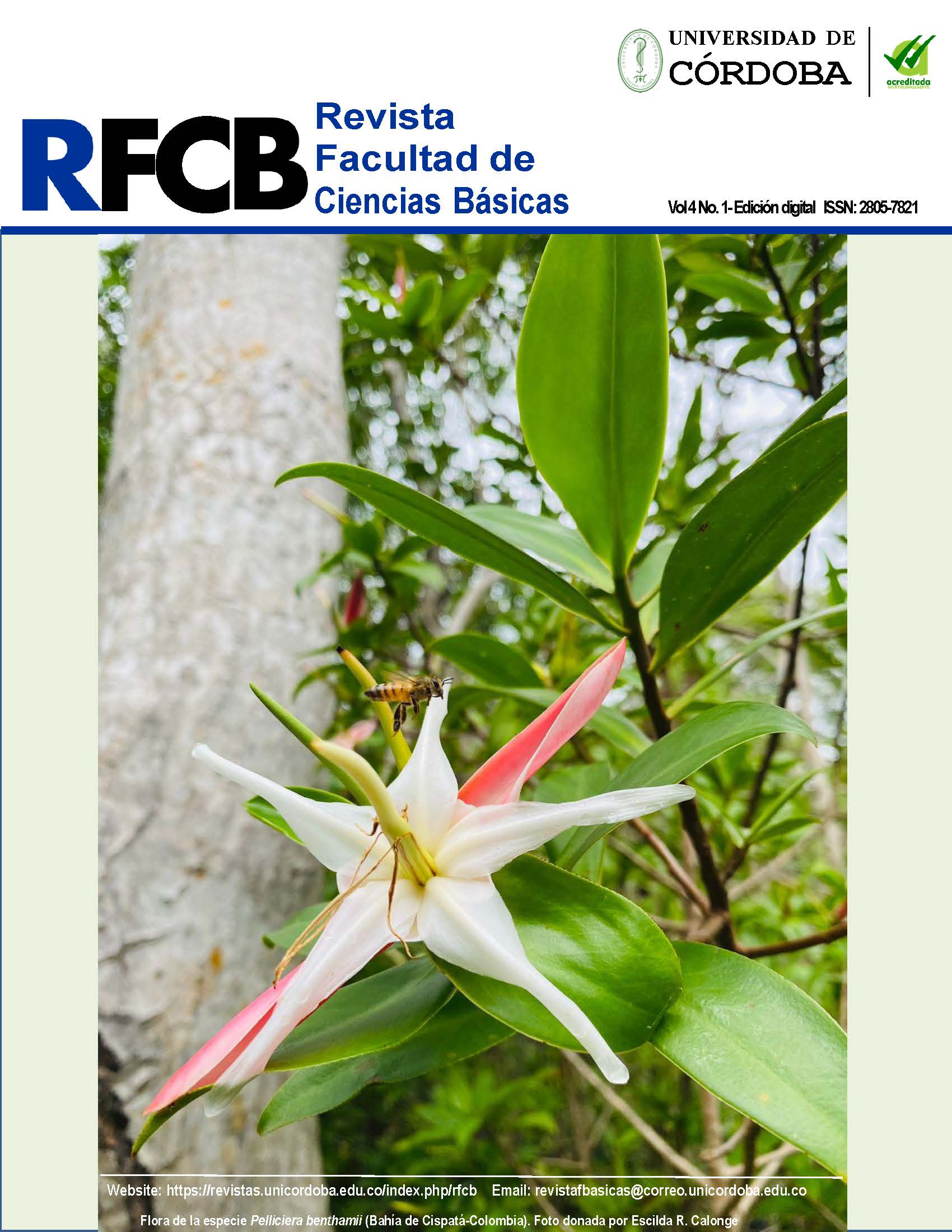ANALYSIS OF SPATIAL OCCURRENCE OF CHRYSURONIA GOUDOTI ASSOCIATED WITH THE DIFFERENT TYPES OF COVERAGE IN THE CÓRDOBA DEPARTMENT, COLOMBIA
ANÁLISIS DE OCURRENCIA ESPACIAL DE CHRYSURONIA GOUDOTI ASOCIADO A LOS DIFERENTES TIPOS DE COBERTURA EN EL DEPARTAMENTO CÓRDOBA, COLOMBIA
Show authors biography
The distribution by occurrence zones of Chrysuronia goudoti is analyzed in relation to different cover types and ecosystems. Citizen science was used to collect data, revealing a visualization bias in sightings. It is highlighted that the areas destined for ornithological research, such as the middle, lower and upper basin of the Sinú River, have been the focus of attention, leaving a deficit in standardized sampling in other areas of Córdoba. Three coverage methodologies are presented that show the distribution of hummingbird occurrences, highlighting the influence of anthropogenic factors on occupancy. The results show that the coverages of "Clean pastures", "Continuous urban fabric" and "Mosaic of crops, pastures and natural spaces" are associated with Chrysuronia goudoti occurrences. In addition, the importance of considering the context and location of sightings to accurately understand species distribution and abundance is highlighted. The complexity and interconnectedness of various factors that influence biodiversity and species distribution, emphasizing the importance of an integrated approach that combines scientific data, local knowledge and citizen participation for effective natural resource management and biodiversity conservation.
Article visits 106 | PDF visits
Downloads
- Ballesteros, J., & Linares, J. (2015). Fauna de Córdoba.
- Banco Interamericano de Desarrollo, Larreamendy, C., & Technology, V. U. (2014). Barrio mercado Montería: diseño de una estrategia urbana y diseño conceptual inicial para la rehabilitación del Mercado Central de Montería y su zona de influencia. https://www3.weforum.org/docs/WEF_BiodiverCities_by_2030_2022.pdf
- Boakes, E. H., McGowan, P. J. K., Fuller, R. A., Chang-Qing, D., Clark, N. E., O’Connor, K., & Mace, G. M. (2010). Distorted views of biodiversity: Spatial and temporal bias in species occurrence data. PLoS Biology, 8(6). https://doi.org/10.1371/journal.pbio.1000385
- Bonney, R., Cooper, C. B., Dickinson, J., Kelling, S., Phillips, T., Rosenberg, K. V., & Shirk, J. (2009). Citizen science: A developing tool for expanding science knowledge and scientific literacy. BioScience, 59(11), 977–984. https://doi.org/10.1525/bio.2009.59.11.9
- Callaghan, C. T., & Gawlik, D. E. (2015). Efficacy of eBird data as an aid in conservation planning and monitoring. Journal of Field Ornithology, 86(4), 298–304. https://doi.org/10.1111/jofo.12121
- Callaghan, C. T., Lyons, M. B., Martin, J. M., Major, R. E., & Kingsford, R. T. (2017). Assessing the reliability of avian biodiversity measures of urban greenspaces using eBird citizen science data Corey. Avian Conservation and Ecology, 12(2). https://doi.org/10.5751/ACE-01104-120212
- Cooper, C. B. (2014). Is there a weekend bias in clutch-initiation dates from citizen science? Implications for studies of avian breeding phenology. International Journal of Biometeorology, 58(7), 1415–1419. https://doi.org/10.1007/s00484-013-0742-z
- Dalsgaard, B., Maruyama, P. K., Sonne, J., Hansen, K., Zanata, T. B., Abrahamczyk, S., Alarcón, R., Araujo, A. C., Araújo, F. P., Buzato, S., Chávez-González, E., Coelho, A. G., Cotton, P. A., Díaz-Valenzuela, R., Dufke, M. F., Enríquez, P. L., Martins Dias Filho, M., Fischer, E., Kohler, G., … Martín González, A. M. (2021). The influence of biogeographical and evolutionary histories on morphological trait-matching and resource specialization in mutualistic hummingbird–plant networks. Functional Ecology, 35(5), 1120–1133. https://doi.org/10.1111/1365-2435.13784
- Enríquez-lenis, M. L., Sáenz, J. C., & Ibrahim, M. (2006). Riqueza , abundancia y diversidad de aves y su relación con la cobertura arbórea en un agropaisaje domindado por la ganadería en el trópico subhúmedo de Costa Rica 1. 49–57.
- Fontúrbel, F. E., Medel, R., & Manuel, L. (2022). Hummingbird-plant interactions in Chile : An ecological review of the available evidence. 13(July). https://doi.org/10.1016/j.avrs.2022.100051
- Frank A, L. S., & Somveille, M. (2020). Survey completeness of a global citizen-science database of bird occurrence. Ecography, 43(1), 34–43. https://doi.org/10.1111/ecog.04632
- Galeano, A., Acevedo, E., & Zamora, G. (2014). Relación entre la distribución espacial y las actividades realizadas por las aves de la vereda Tuis-Tuis Tierralta - Córdoba. In Evodia (Vol. 1, Issue 63, pp. 14–20).
- González Moncada, A. (2018). Distribución y riqueza espacial de colibríes con relación a coberturas y uso del suelo en la Región Andina. 55. https://ciencia.lasalle.edu.co/biologia
- Grey, N., Polo, C., & Paternina, J. A. V. (2020). DE INVESTIGACIÓN TURIPANÁ DE AGROSAVIA ,. 1–19.
- Hilty, S., & Brown, W. (1988). Guía de las aves de Colombia. In El Hornero (Vol. 13, Issue 1, p. 94). https://doi.org/10.56178/eh.v13i1.1130
- Ideam. (2010). Leyenda nacional de coberturas de la tierra. Metodología CORINE Land Cover adaptada para Colombia, escala 1:100.000. In Area: Vol. TH-62-04-1 (Issue 257).
- Ideam. (2016). Mapa de Bosque No Bosque Colombia - Área Continental (Escala Fina LANDSAT). Escala 1:8.500.000. Año 2016. 2016.

